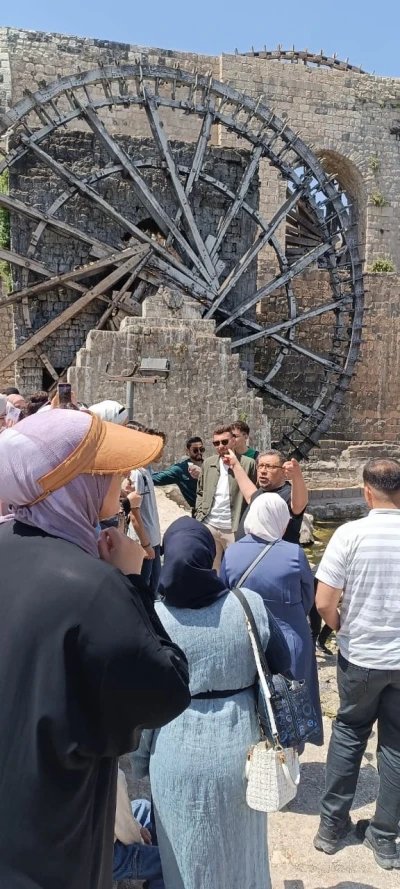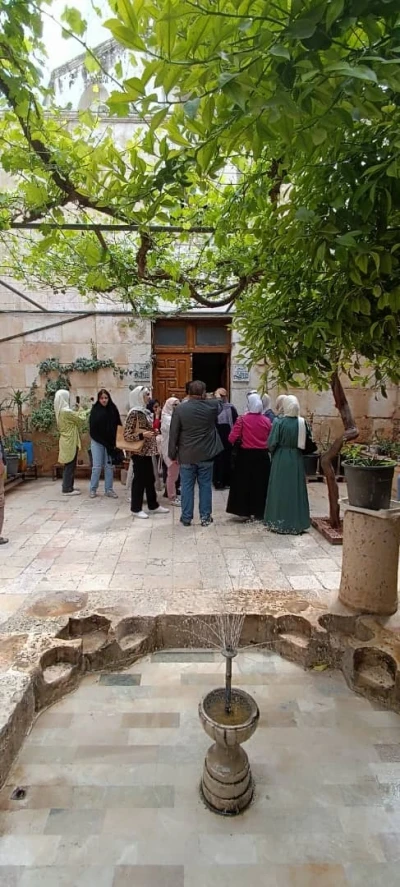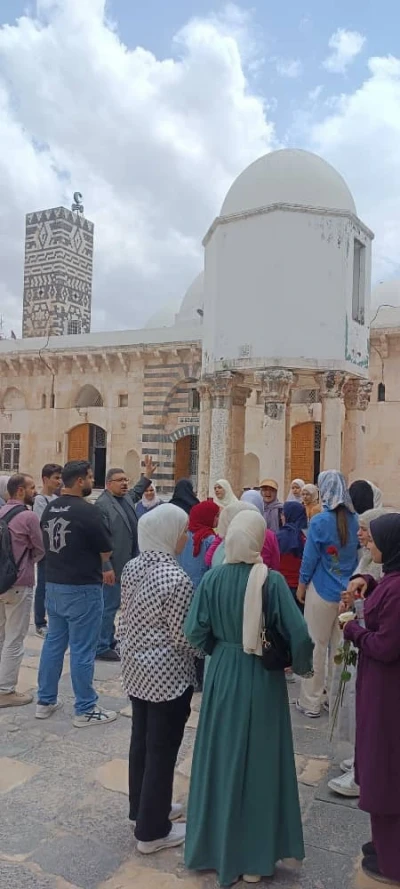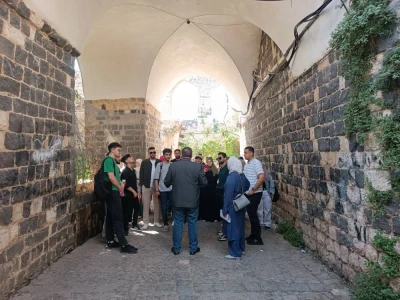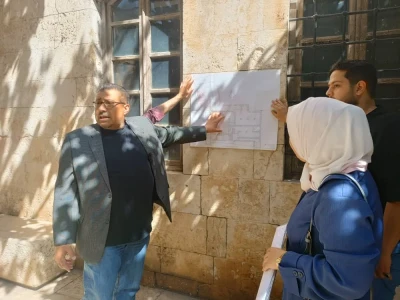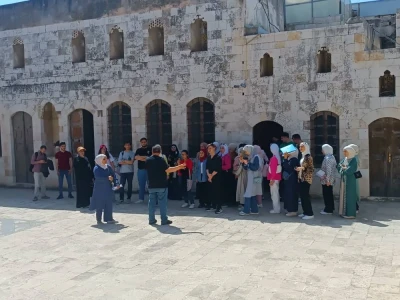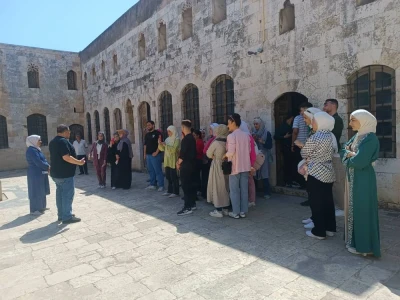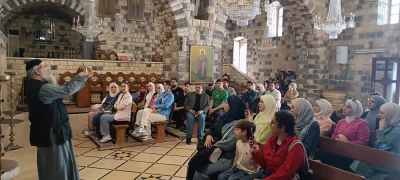A scientific trip for students of the Faculty of Architecture
Second-year students in the College of Architecture, as part of the History of Architecture course, took a field trip to the historical and archaeological heart of Hama.
The students traveled through various stations along a specific route, where they learned about ancient buildings dating back to different historical periods. They were introduced to their architectural details, structural characteristics, and structural and decorative styles.
They began with the three norias (the noria, the mu'ayyadiya, and the ottoman) and the widows' mill, where they were explained the mechanism of the noria, its divisions, and its history. The students then proceeded through the alleys of the old city, passing by the Ottoman baths and the Khanqah Mosque, before entering the ancient Azm Palace, an architectural gem on the banks of the Orontes River. They learned about its history, divisions, decorations, and roof ornaments.
The next stop was the famous Al-Nuri Mosque, built in 1262 AD and expanded and added to by Abu Al-Fida, King of Hama, who built the al-Rawshan section of the mosque overlooking the Orontes River.
The rest stop was at the restored, rehabilitated, and beautifully utilized historic Sultan's Bathhouse.
The scientific trip concluded with a visit to two beautiful historical buildings in the Al-Madina neighborhood, one of the oldest cities in Hama. We visited the Church of Our Lady of the Entrance, which dates back to the fourth century AD, in addition to a visit to the Great Mosque of Al-A'la, which some historical studies believe is the fifth mosque in Islam.
The scientific trip was supervised by Engineer Assia Debs and Heritage Consultant Engineer Majd Hijazi. It was a wonderful and beneficial opportunity for the students to connect the theoretical aspect of the subject of the History of Architecture with reality, as well as to learn about the history and civilization of their country by viewing and studying the details of the ancient historical buildings in Hama.

